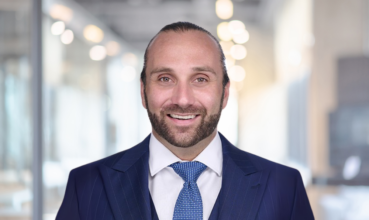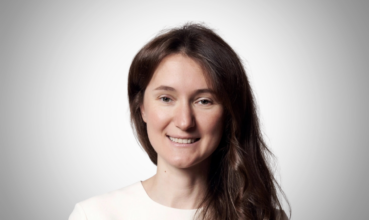Are you looking for a lucrative way to invest in real estate without the need to purchase or manage properties? Wholesaling real estate in Texas could be the perfect strategy for you. ...
From Wildcatter to Urban Pioneer: Tanya Ragan's Evolution in Texas Real Estate




“I consider myself fairly risk tolerant,” says Tanya Ragan, President and CEO of Wildcat Management, a Dallas-based real estate investment and development firm. “I see myself as a trailblazer, an urban pioneer, someone who is constantly pushing myself to be uncomfortable and to not get bored.”
This wildcatter mentality—named for the oil industry risk-takers who drill exploratory wells in unproven areas—has guided Ragan through a diverse career spanning fashion, oil and gas, and real estate. Today, she stands as one of the few remaining independent local investors in a Dallas market increasingly dominated by institutional capital.
Understanding the Consumer Experience
Ragan’s approach to real estate was shaped by her earliest professional experiences, beginning as a 19-year-old intern at Neiman Marcus.
“At Neiman Marcus, you learned what’s so great about this piece of fabric, the designer, the maker, the stitching,” Ragan explains. “Then you’ve got the consumer. What is it that they like about this? How does it benefit me? How does it make me feel?”
This consumer-focused philosophy became her foundation across multiple industries. In oil and gas, she built relationships with property owners by educating them on how companies would care for their land and follow through on payments. Later, in real estate—particularly historic rehabilitation—she continued emphasizing storytelling and experience.
“We’re taking this 100-year-old building that has sat empty for 30 years and it’s boarded up… we found this fabulous history on it, an amazing family with an incredible name who ran this fabulous furniture store in this building for almost 50 years.”
Transforming Dallas’s Farmers Market
Ragan’s wildcatter spirit led her to see potential in overlooked areas, most notably Dallas’s Farmers Market district. What is now “the most successful neighborhood in all of downtown” was once just a collection of old warehouses and cold storage facilities.
“Almost 20 years ago that did not exist,” Ragan recalls. “Through advocacy and through combining all the various property owners, business owners, etc., we were able to organize, advocate at the local and state level to create this incredible neighborhood experience.”
This transformation represents the kind of district-wide impact that Ragan believes is increasingly difficult to achieve in today’s market. “That can’t happen today. Those days are over,” she observes. “You can come in, buy a building, or maybe assemble a couple parcels, but you can’t have that same type of impact.”
Adapting to a Changing Dallas
Dallas has undergone dramatic changes in recent years, with an influx of major financial institutions, real estate tech companies, and international investment. The city is experiencing a construction boom, with a $3 billion Convention Center development and numerous other projects reshaping the urban core.
As one of the few remaining local, independent developers in downtown Dallas—and notably, the only woman—Ragan recognizes that her approach needs to evolve.
“I am certainly in a state of evolution and evaluating what’s next,” she admits. “We have so much international institutional investment coming to our city that it is changing drastically.”
Rather than competing directly with institutional capital, Ragan is considering how she might apply her neighborhood-building expertise to smaller communities throughout Texas.
“What I recognize is some of the things that I have learned over the last decade, things like neighborhood experiences, creating these cool environments… it doesn’t need to be in a city of two million people,” she explains. “Whether it’s a town of 2,500 people or 100,000 people, there is a certain checklist that a lot of towns meet regardless of their size.”
Boots on the Ground: The Art of the Deal
Throughout her career evolution, Ragan has discovered that her greatest strength lies in direct involvement with projects rather than managing a large organization.
“What I’m really good at, intuitively, is being in the field and the art of the deal,” she says. “When I take myself too long away from the field, and all of a sudden I’m managing a lot of people… I am at my best when I am working the deal and in the field, really hands-on, boots on the ground.”
This realization has influenced her strategic thinking, particularly as she observes how growth in downtown Dallas has shifted from the center to the edges. “Growth now, organically, is all along the edge,” she notes, attributing this partly to the pandemic’s impact on office occupancy in the central business district.
When asked about converting office buildings to residential use—a trend in many urban markets facing vacancies—Ragan is skeptical about its viability in Dallas, particularly for the 1980s high-rise towers that dominate downtown.
“These office to residential conversions are very, very difficult,” she explains. Dallas office users typically want either brand-new buildings with all the amenities or historically significant properties with character and edge.
Looking Forward: The Thrill of the Hunt Continues
As Ragan contemplates her next moves, she remains committed to pushing creative boundaries and seeking new challenges. “It’s important to me personally to constantly evolve and learn and grow and do new things and push myself creatively,” she says.
She continues to be active in the broader real estate community, serving as a judge for SMU’s inaugural Hilltop Founders pitch competition and speaking frequently at women’s events in the industry.
“I do think it’s important for women to see other women in these positions and in these roles,” Ragan notes, highlighting her commitment to mentorship in a field where female leaders remain relatively rare.
For this modern-day wildcatter, the thrill of the hunt continues—whether in downtown Dallas or in smaller communities throughout Texas. As markets evolve and institutional capital reshapes urban centers, Ragan’s adaptability and entrepreneurial spirit position her to find opportunity where others might not be looking—the essence of the wildcatter approach.
Similar Articles
Explore similar articles from Our Team of Experts.




When Tim Stanard transitioned from creative production and art direction to real estate in 2001, he brought with him an artist’s eye that would become his signature advantage in Brookl...


Tampa is often hailed as the sunshine-soaked jewel of Florida’s Gulf Coast. It’s known for its vibrant blend of cultures, thrilling theme parks, and sizzling nightlife. However, if y...


In the fast-paced world of South Florida real estate, William (Billy) Cunningham III stands out as a dealmaker who turned his extensive network and entrepreneurial drive into a thriving real...


“In commercial real estate development, having cash tied up in earnest money deposits can be the difference between seizing a prime opportunity and watching it slip away,” says A...



